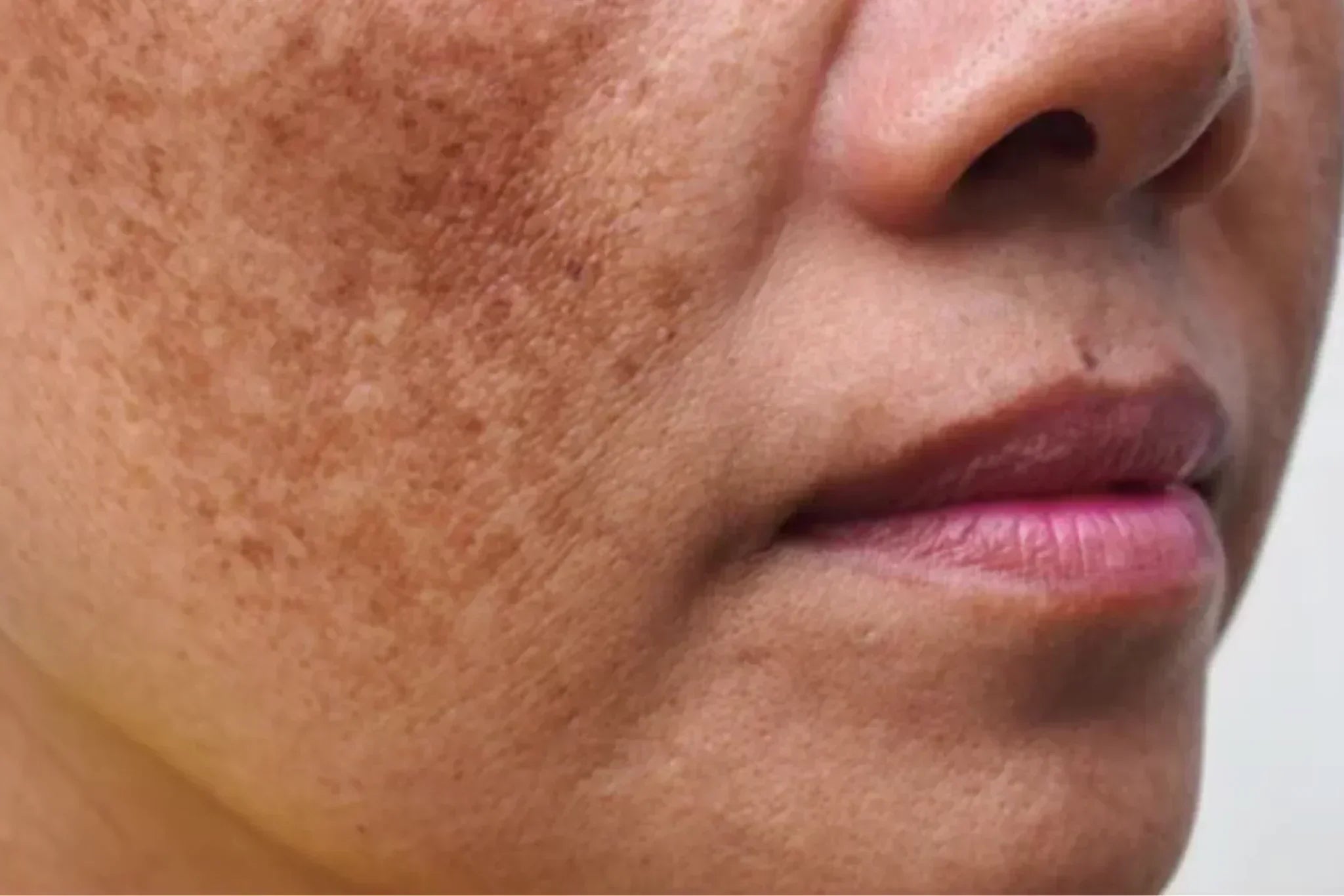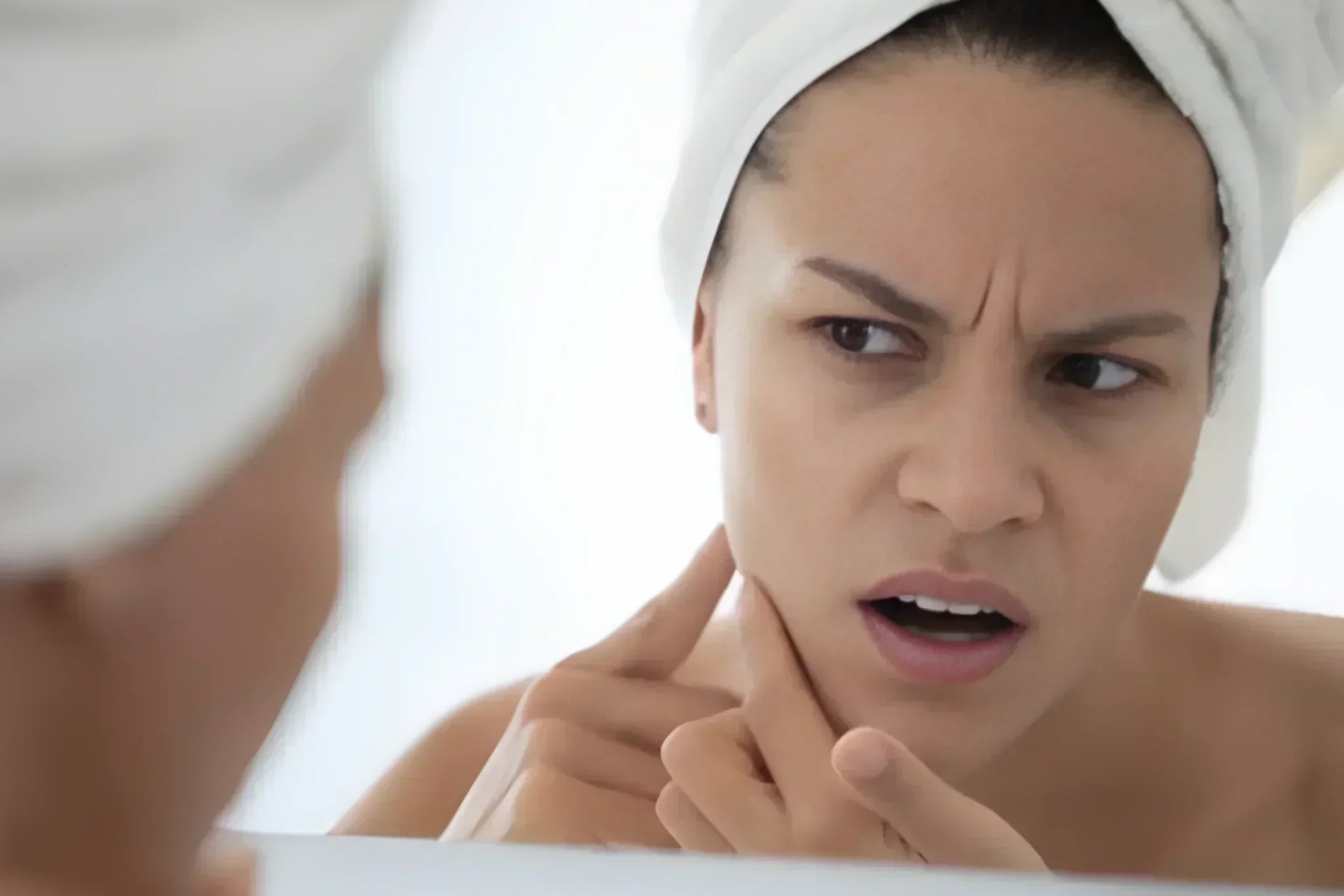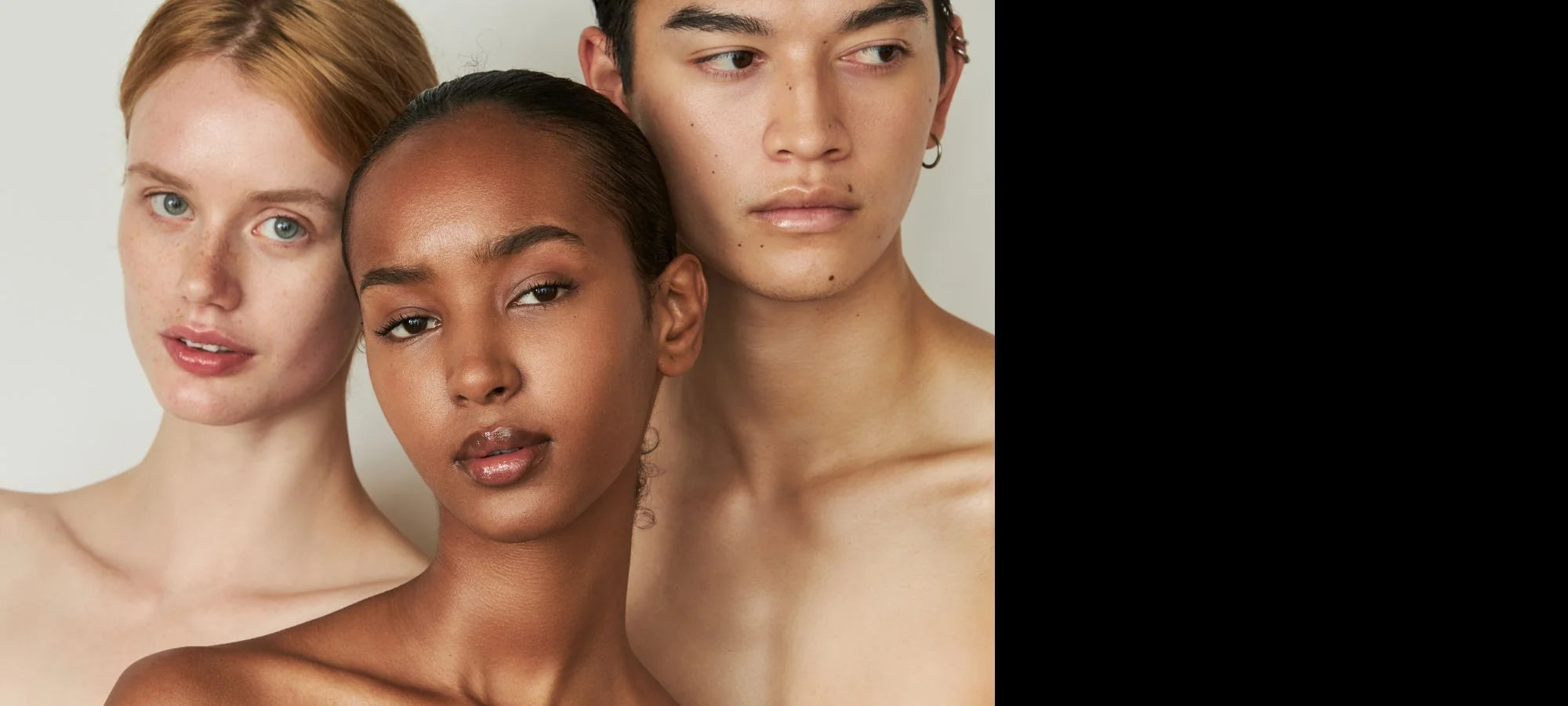Why Heat and Humidity Can Make Skin Worse
While summer brings a glow to some, for many, high humidity can wreak havoc on the skin. Excessive environmental heat and moisture are directly responsible for prickly heat, tropical acne, heat hives and moisture in the air ramps up sweat and oil production, often leading to clogged pores and breakouts.
The warm, damp environment also creates a breeding ground for yeast and bacteria, contributing to conditions like folliculitis and skin infections. The added humidity can trigger inflammation and worsen issues like Rosacea.
Some skin conditions may be exacerbated by heat and humidity, turning a mild skin inflammation into a full-blown disease. Bacterial and fungal infections of the skin are always problems in hot and humid settings, and friction blisters and hand and foot eczema are far more commonly seen in those conditions.
The intense UV light found in sunny climates is responsible for sunburn, which can be just as incapacitating as a thermal burn.
SUNBURN
Sunlight can make skin ultrasensitive, leading either to direct skin damage or immune system–mediated reactions depending on the mechanism.
A photosensitivity reaction mainly caused by UV-B radiation (290–320 nm), which damages the epidermis.
- Severity decreases with higher melanin pigmentation in the skin
- Severe sunburn increases the risk of skin cancers, including malignant melanoma.
- Symptoms appear 2–6 hours after exposure, peak at 24–36 hours, and fade over 3–5 days.
- Mild sunburn cases can be treated with cool soaks, corticosteroid creams, and anti-inflammatory medications (aspirin, indomethacin). A good home remedy is a cold yogurt mask.
- Prevention is key: avoid sun when shadows are shortest (10 am–2 pm), wear protective clothing, and use sunscreens with SPF 15+.
PHOTOTOXICITY AND PHOTOALLERGY:
Both involve a combination of light and a chemical agent (such as a drug or topical product).
Phototoxic Reactions:
- Resemble sunburn, occurs in sun-exposed areas.
- Some drug tetracyclines antibiotics (like Doxycycline and Fluoroquinolones), Diuretics, NSAIDs, Antihistamines, Chemotherapy drugs, Retinoids, Antifungals, and Psoralens can cause lasting effects like hyperpigmentation or nail damage.
Photoallergic Reactions:
- Immune-based, happens only in sensitized individuals.
- Appears as eczema-like rashes on sun-exposed skin.
- Common triggers: fragrances, antibiotics, sunscreens containing PABA.
- Phytophotodermatitis - popularly called “Margarita Dermatitis”. It happens when certain chemicals in plants or fruits (especially citrus fruits like limes, lemons, oranges, or even celery and parsley) come into contact with your skin, then are activated by sunlight — especially UVA light — causing a toxic reaction. It’s not a true allergy, but a phototoxic reaction.
Preventive Measures:
Avoid the responsible chemical/drug and sunlight exposure. Some drug-induced reactions can last for months if the chemical binds to skin proteins.
If your skin barrier is already compromised, humidity can make it even harder for your skin to regulate itself, throwing everything off balance
BASIC RULES FOR ALL CONDITIONS:
- Keep your barrier strong – don’t over-strip, over-exfoliate, or dry it out
- Use lightweight, breathable products – no heavy oils or rich occlusives
- Protect from sun + heat triggers – physical sunscreen, cool mists, shade
- Watch for ingredients that feed yeast – especially in folliculitis, such as fatty acids and esters, oils with high Oleic content, fermented ingredients etc.
HEAT AND HUMIDITY-FRIENDLY DAILY ROUTINE
1. Gentle Cleanser (AM & PM, unless your barrier is compromised.
-
- Gel or foaming gel cleanser with Mandelic Acid, Ketoconazole or Sulfur (antibacterial + antifungal)
- Avoid harsh scrubs or high-foam cleansers that wreck your barrier.
- We recommend THE MANDELIC CLEANSING GEL
2. Soothing Toner or Mist
-
- Look for panthenol, green tea, cucumber, zinc, or licorice root
- Try THE GLYCOLIC LACTIC TONER
3. Targeted Serum (optional)
-
- For Acne: Niacinamide, Benzoyl Peroxide, Azelaic Acid, Mandelic Acid, or Salicylic Acid. We recommend THE ACNE GEL.
- For Folliculitis: Mandelic Acid, Sulfur, or topical antifungals (if needed)
- For Rosacea: Azelaic Acid, Niacinamide, or Green Tea Extract
4. Light Hydrator or Barrier Cream
-
-
Must be non-comedogenic + breathable, ideally, water based creams and gels. We love THE DAILY MOISTURIZER.
-
5. Physical Sunscreen (daily)
-
- Zinc oxide formulas calm inflammation and are less likely to irritate rosacea or acne
- Choose non-comedogenic, matte, fluid, or gel-textured ones for humid weather
EXTRA TIPS BY CONDITION
For Acne:
- Use a clay or zinc mask 1–2x a week to control oil and reduce bacteria. We love THE ZINC MASK WITH GOJI BERRY PREBOTICS
- Avoid occlusive makeup or heavy SPF formulas
- Don’t overdo exfoliation—2–3x/week max
For Folliculitis:
- Use an antifungal body wash ( mandelic acid or ketoconazole) a few times a week. We recommend THE MANDELIC CLEANSING GEL- Face and Body approved.
- Wear breathable, loose clothing, especially post-workout
- Use non-oily sunscreen on the body
- Never pick or shave over inflamed areas
For Rosacea:
- Avoid heat, spicy food, alcohol, and saunas
- Use a cooling mist or keep skincare in the fridge
- Mandelic Acid - if well tolerated, antimicrobial, Glycolic Acid, Benzoyl Peroxide - for pustules
- Green and white tea extracts, Hops, Azelaic Acid, Zinc Oxide, Licorice Extract, Beta Glucans
With the right routine and ingredients, your skin can stay balanced—even in the most challenging weather conditions.





